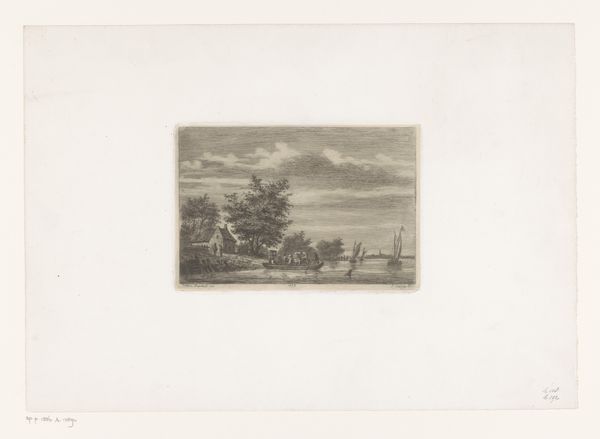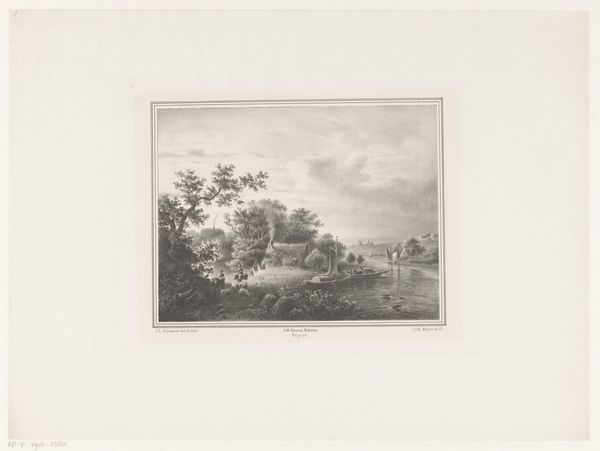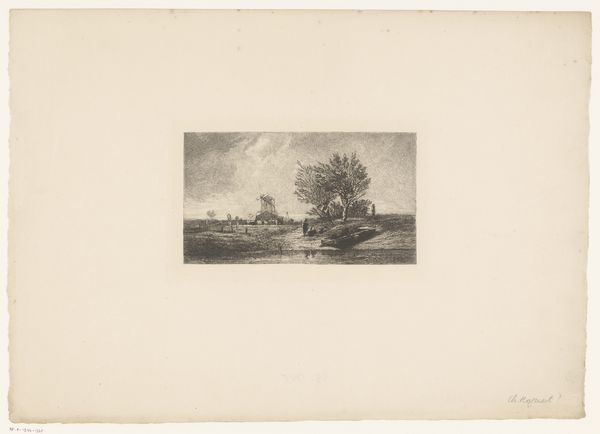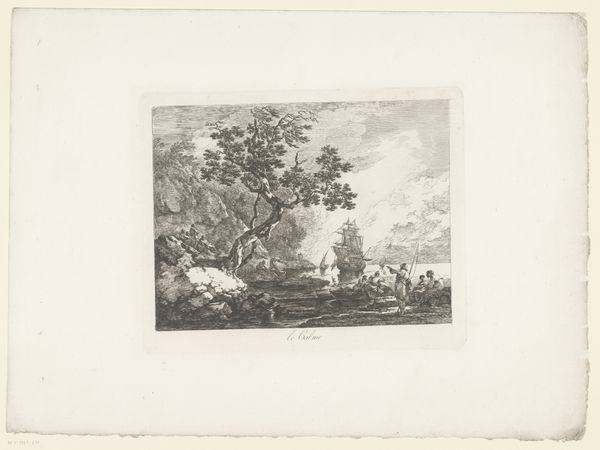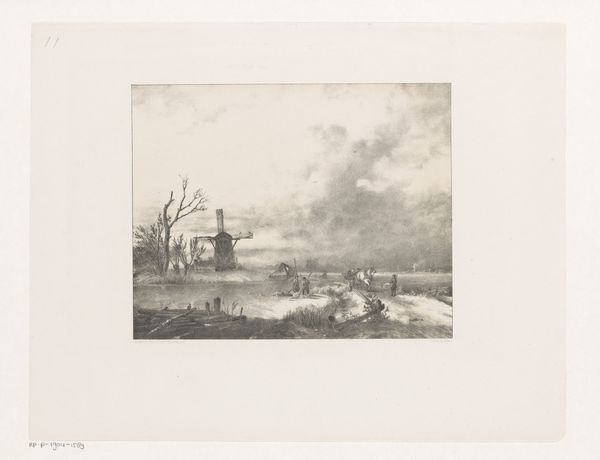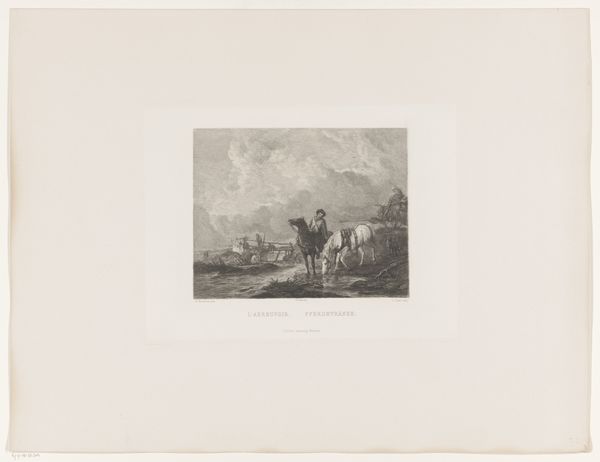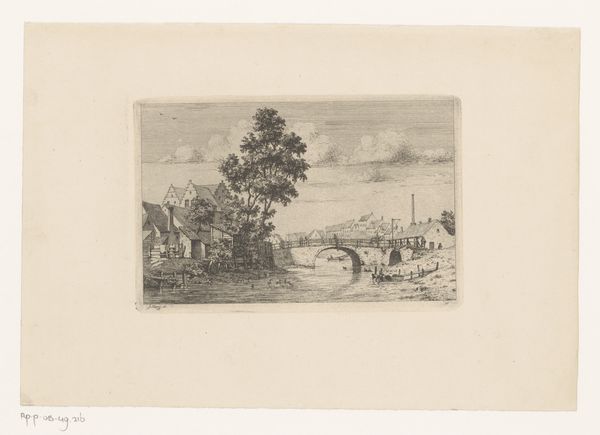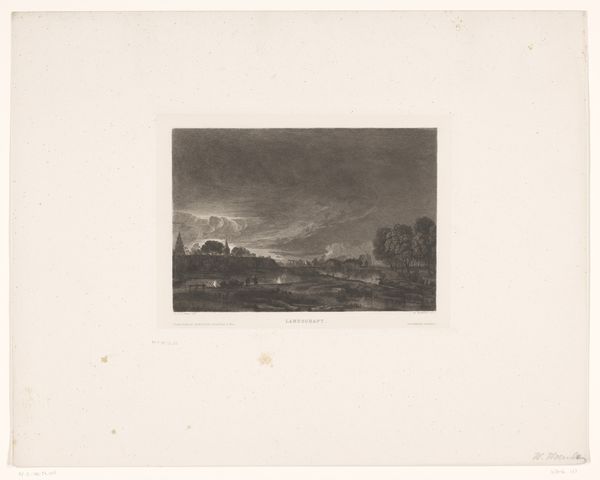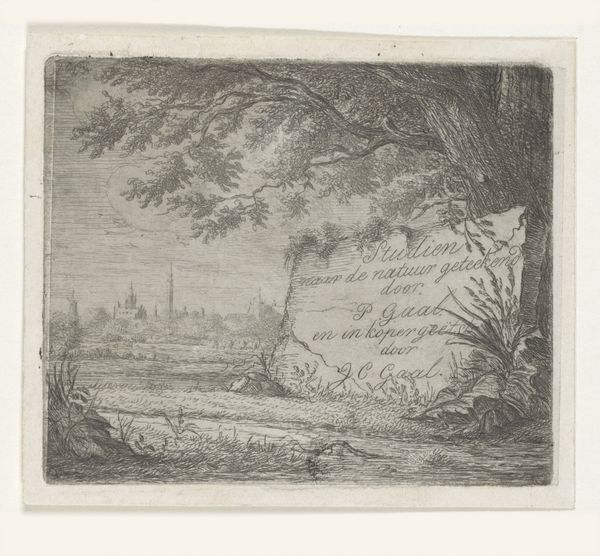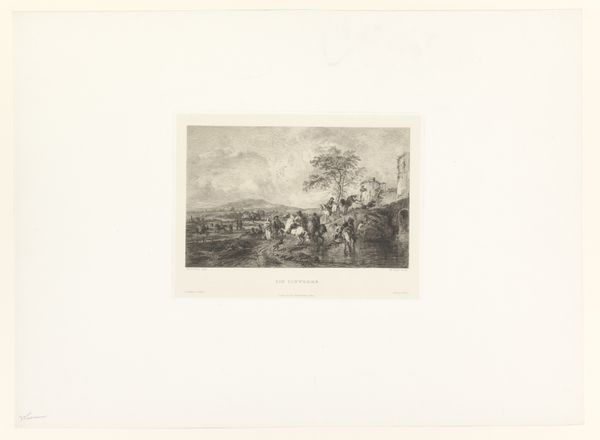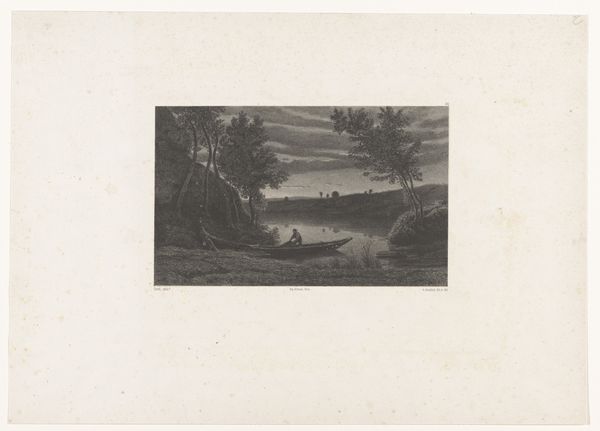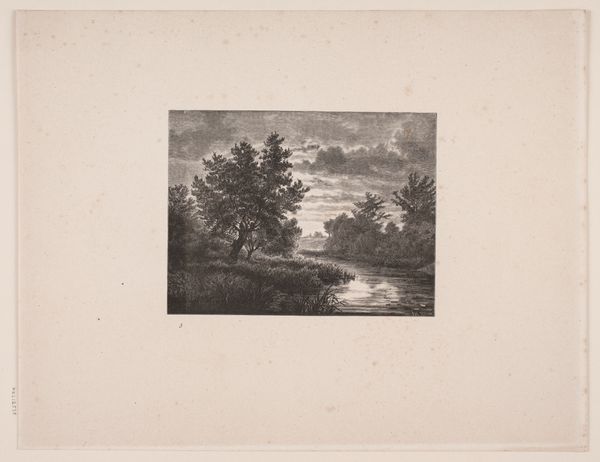
drawing, print, etching
#
drawing
# print
#
etching
#
landscape
#
river
#
romanticism
Dimensions: height 334 mm, width 452 mm
Copyright: Rijks Museum: Open Domain
Curator: Looking at this etching, I am immediately struck by a pervasive sense of tranquility—despite the humble scene depicted. What draws you in? Editor: Well, I can start by telling you that this work is called "Vissersboot op rivier bij maanlicht," which translates to "Fishing Boat on River by Moonlight." Jacobus Sörensen created it sometime between 1843 and 1856, utilizing etching techniques. It’s currently held in the collection of the Rijksmuseum. I think it is an interesting representation of a rural Dutch evening. But I find it far from tranquil, because it exposes some of the class realities and economic realities present in rural Netherlands during this time. It depicts the working class in a back breaking economic structure. It has an air of fatigue to it for me. Curator: I see your point. The subdued palette and composition evoke the Romantic period's fascination with nature and the human condition. However, the moon here could be also representing so much more, for centuries it has carried such rich, deeply felt meaning—the symbol of transformation, of cyclical change, it influences the tides and human emotions. The reflection in the water compounds its significance. Editor: True. I would say the positionality is a political choice. By positioning working-class subjects under the light of the moon and their place under its glow, it seems to propose that it is not simply "nature," but economic exploitation driving these workers to continue the labor so late in the evening and during dangerous circumstances. This would represent the class divide in an extremely subtle manner for this period, highlighting a need for some structural change, which would influence so much Dutch art produced over the course of the next few decades. It’s also worth pointing out, of course, that these people appear as the very labor in this landscape: this exposes their value and is actually radically pro-worker when considering the common aesthetic representations that existed across the Netherlands at this time. Curator: Yes, Jacobus Sörensen did portray the common toiler of the land in ways that acknowledged them beyond being subjects of work. You bring forward compelling details regarding its socio-political context. It adds yet another dimension to my perception of the river and its subjects. The image can reflect their hardship, and in doing so the artist’s empathy is captured in time through light, shadow and form. Editor: Indeed. It is truly fascinating how an artwork's visual language can be rooted in specific cultural, social, and historical landscapes.
Comments
No comments
Be the first to comment and join the conversation on the ultimate creative platform.
